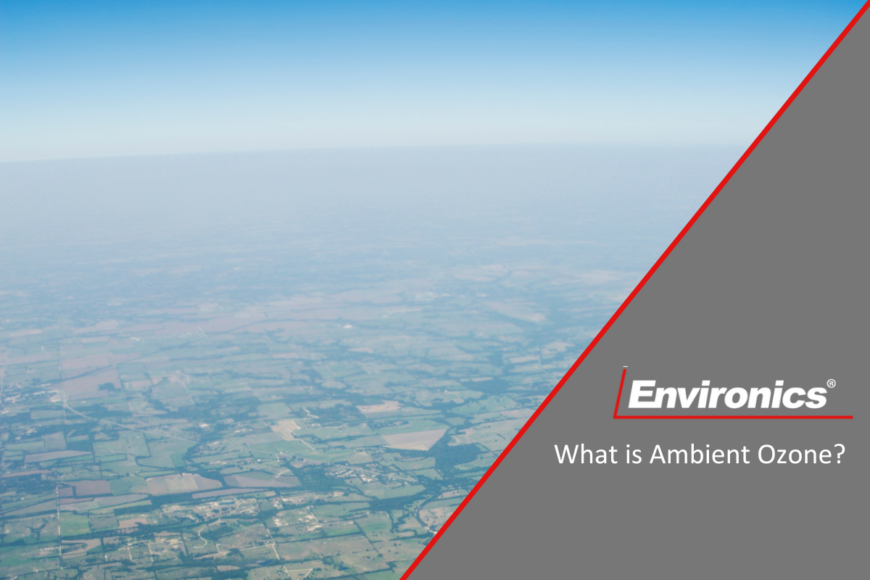
Ambient ozone is a significant component of atmospheric chemistry, influencing air quality and human health. While ozone (O₃) plays a crucial protective role in the upper atmosphere by shielding the Earth from harmful ultraviolet radiation, its presence at ground level—often referred to as ambient or tropospheric ozone—poses serious environmental and health risks. Understanding ambient ozone, its formation, effects, and monitoring techniques is critical for regulatory compliance, scientific research, and public health initiatives.
How is Ambient Ozone Formed?
Ambient ozone is a secondary pollutant, meaning it is not directly emitted but rather forms through chemical reactions in the atmosphere. The primary precursors to ambient ozone are:
- Nitrogen Oxides (NOₓ): Emitted from vehicle exhaust, industrial facilities, and combustion processes.
- Volatile Organic Compounds (VOCs): Released from industrial processes, solvents, paints, and vegetation.
Under sunlight, these precursors undergo complex photochemical reactions:
1. Photodissociation of Nitrogen Dioxide (NO₂):
NO2+hv(λ<430nm)→NO+ONO₂ + hv (λ < 430nm) → NO + ONO2+hv(λ<430nm)→NO+O
2. Formation of Ozone:
O+O2→O3O + O₂ → O₃O+O2→O3
This reaction sequence is driven by solar radiation, making ambient ozone levels typically higher during warmer months and in regions with significant precursor emissions.
Environmental and Health Impacts
Health Effects
Exposure to elevated levels of ambient ozone can lead to various adverse health outcomes, particularly affecting the respiratory and cardiovascular systems. According to the U.S. Environmental Protection Agency (EPA) and the World Health Organization (WHO), ozone exposure is linked to:
- Respiratory inflammation: Irritation of the airways, coughing, and shortness of breath.
- Asthma exacerbation: Increased frequency and severity of asthma attacks.
- Reduced lung function: Especially in children, the elderly, and individuals with preexisting conditions.
- Increased mortality rates: Studies indicate higher ozone levels correlate with increased hospital admissions and premature deaths.
Environmental Effects
Ozone is also a major component of smog, contributing to visibility reduction and ecosystem degradation. Prolonged exposure to elevated ozone concentrations can:
- Damage vegetation: Inhibiting photosynthesis and reducing crop yields.
- Contribute to climate change: Acting as a greenhouse gas with indirect radiative forcing effects.
- Accelerate material degradation: Causing deterioration in rubber, plastics, and construction materials.
Monitoring and Measuring Ambient Ozone
Due to its harmful effects, ambient ozone monitoring is a crucial aspect of air quality management. Regulatory agencies worldwide, such as the EPA in the United States and the European Environment Agency (EEA), establish concentration limits on ozone and its precursors (including NOx and VOCs) which require precise measurement techniques.
Ozone Measurement Techniques
1. UV Absorption Spectrophotometry:
- Based on ozone’s strong absorption of UV light at 254 nm.
- The Beer-Lambert law is applied to determine concentration levels.
- Used by most regulatory agencies due to its high accuracy.
- Ozone photometry uses closed-loop control systems to measure and adjust ozone output, ensuring accurate calibration of ambient ozone analyzers.
2. Chemiluminescence:
- Ozone reacts with a reagent (e.g., ethylene), producing light emissions proportional to its concentration.
- Highly sensitive but requires consumables.
3. Electrochemical Sensors:
- Utilize electrodes to detect ozone presence through redox reactions.
4. Compact and portable but may lack long-term stability.
The Role of Calibration in Ambient Ozone Monitoring
Accurate ozone measurement requires regular calibration of air monitoring instruments to ensure reliability. Environics provides advanced calibration systems, such as the Series 6103 Ozone Transfer Standard, which generate and verify ozone concentrations with high precision. These systems employ:
- Dynamic gas dilution techniques to create standard reference gases.
- Closed-loop PID control to correct and stabilize ozone generation.
By integrating such calibration systems, environmental monitoring agencies and research institutions can maintain compliance with air quality standards and improve data accuracy for regulatory and scientific purposes. Additionally, the 6103 features an internal UV photometer for continuous real-time ozone measurement.
Regulatory Standards for Ambient Ozone
Governments and international agencies set permissible limits for ambient ozone to mitigate its effects. Key standards include:
1. U.S. EPA National Ambient Air Quality Standards (NAAQS):
- 8-hour standard: 0.070 ppm (70 ppb)
- 1-hour standard (historical): 0.12 ppm (120 ppb)
2. World Health Organization (WHO) Guidelines:
- 8-hour exposure: 60 µg/m³ (30 ppb)
3. European Union Air Quality Directive:
- Target value: 120 µg/m³ (~60 ppb) over 8 hours.
These regulations highlight the necessity of continuous ozone monitoring and calibration to ensure compliance and effective air quality management.
Interested in Ozone Monitoring?
Ambient ozone, while a natural component of the atmosphere, presents significant challenges for public health and environmental sustainability when present in excess. Its formation through photochemical reactions, its wide-ranging health and environmental effects, and the necessity for precise monitoring make it a critical area of study for scientists, regulatory agencies, and industries.
Accurate measurement and calibration of ozone monitoring systems, such as those provided by Environics, are essential to ensuring data reliability and regulatory compliance. As air quality standards evolve, the role of advanced calibration technologies in mitigating ozone pollution will become increasingly vital.
By maintaining high precision in ozone detection, we can better understand atmospheric dynamics, implement effective pollution control strategies, and ultimately work toward cleaner, healthier air for all.

